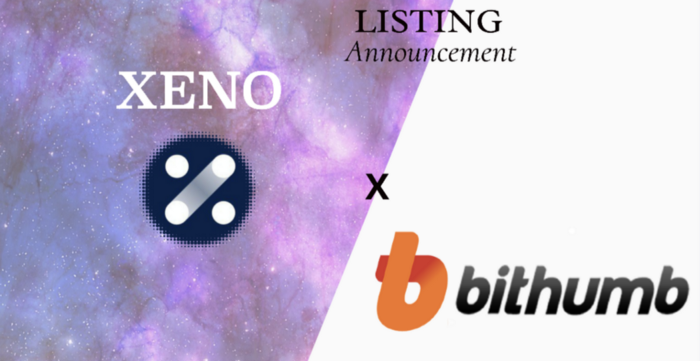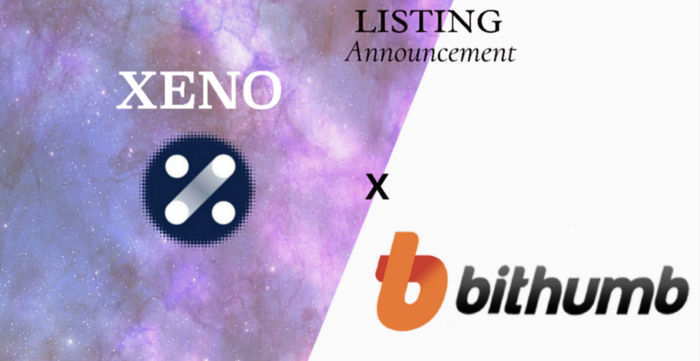Blogs
EOS Mainnet Launched: Behind the Scenes

The hype behind the launch of EOS Mainnet has finally subdued a little after it went live over the weekend. The mission has finally been accomplished. The voting went live on 6th June 2018. For the blockchain to be considered live and thriving, “15% percent of all tokens must stake a vote for a Block Producer Candidate. This process could take hours to days.” (EOS official release on medium.com) Established in 2017, the EOS cryptocurrency was developed as an ERC20 token. The release of the mainnet will be a major shift. The platform of EOS has already challenged Ethereum in many ways. As of now, EOS (EOS) is ranked 5th on the coinmarketcap.com list based on its market cap.
EOS is designed to support dApps or decentralized applications as well as smart contracts. The advantage over Ethereum is that the EOS platform is capable of handling a much higher throughput at a lower latency, 5000 per second as against 15 per second on the Ethereum blockchain. Instead of proof of work mechanism used by Ethereum, EOS has a proof of stake consensus mechanism. It is much easier to scale than the proof of work mechanism. The transaction costs on the EOS blockchain will be much lower as there can only be 21 EOS block producers at a time. However, this can be a huge problem if all the miners are in one jurisdiction. The block producers will then have to be continuously rotated to solve this issue. It has also been pointed out by some critics that the large miners may be able to speed up the process by buying votes.
Behind the delay of EOS Mainnet Launch
Initially, the EOS mainnet was scheduled to be released on 1st June 2018. During the long promotional period of nearly a year, the Block.one team had raised $4 billion. So, what’s the reason behind the delay of EOS mainnet release? After the Block Producer’s voting started, it was seen that the Block Producers were a little reluctant to give the green signal. The news about the discovery of some critical vulnerabilities and certain security issues also contributed to the delay. Nearly 620 bugs had been discovered and operated on. Depending on the degree of vulnerability, they had been labeled with a designator ranged from P0 to P4. The P0 designators were solved almost immediately while the P4 designators were slated for a fix in the future. EOS had started a Bug Bounty Campaign soon after the bugs were discovered. The EMLG team had put in massive efforts to resolve the bugs and other vulnerabilities.
The Voting
To complete the mainnet launch, the validator candidates had formed a coalition called EOS Mainnet Launch Group or EMLG. The votes were held every 24 hours such as to decide whether the mainnet should be released or not. And, the decision always hangs between ‘go’ and ‘no-go’. The decision would be settled when 2/3 + 1 block producers voted for ‘go’, that is, 15% of the tokens were staked on a group.
Finally, on 9th June, the voting process achieved a unanimous ‘go’. This led to the release of the EOS Mainnet on 10th June, at 13:00 UTC, with random validators unless the delegates received sufficient votes.
Price Analysis
The news of CoinRail hack, a South Korean crypto exchange, had resulted in some major drops in the prices of major cryptocurrencies like Bitcoin, Ethereum, EOS, Ripple etc. EOS had experienced a drop by nearly 14.72% after the hack. The hype about the mainnet launch and the ultimate release is already having a positive effect on the price of the crypto coin. At the time of writing, as per as coinmarketcap.com, the price of EOS (EOS) shows approximately $11.29 USD (0.21%). The market cap is approximately $10,117,438,150 USD while the volume (24h) is over $1,215,550,000 USD. (As of 12th June 2018) From past experiences, the cryptocurrency market had revived after even some major hacks. The CoinRail exchange had just experienced a small period of turbulence. The cryptocurrencies will hopefully easily recover from this and EOS has many new things to look forward to as a result of the Mainnet launch.
Despite all the vulnerability issues and criticism from the media from a delay in the launch date of the Mainnet, EOS has ultimately managed to successfully release it. It’s a huge mark on the roadmap of EOS, one of the top-5 cryptocurrency. The EOS enthusiasts eagerly await new developments on the EOS platform that will also lead to a better performance in the market.
For the latest cryptocurrency news, join our Telegram!
Disclaimer: This article should not be taken as, and is not intended to provide, investment advice. Global Coin Report and/or its affiliates, employees, writers, and subcontractors are cryptocurrency investors and from time to time may or may not have holdings in some of the coins or tokens they cover. Please conduct your own thorough research before investing in any cryptocurrency and read our full disclaimer.
Image courtesy of Pexels
Altcoins
XNO Token of Xeno NFT Hub listed on Bithumb Korea Exchange


Hong Kong, Hong Kong, 25th January, 2021, // ChainWire //
Xeno Holdings Limited (xno.live ), a blockchain solutions company based in Hong Kong, has announced the listing of its ecosystem utility token XNO on the ‘Bithumb Korea’ cryptocurrency exchange on January 21st 2021.
Xeno NFT Hub (market.xno.live ), developed by Xeno Holdings, enables easy minting of digital items into NFTs while also providing a marketplace where anyone can securely trade NFTs.
The Xeno NFT Hub project team includes former members of the technology project Yosemite X based in San Francisco and professionals such as Gabby Dizon who is a games industry expert and NFT space influencer based in Southeast Asia.
NFT(Non-Fungible Token) technology has recently gained huge focus in the blockchain arena and beyond, making waves in the online gaming sector, the art world, and the digital copyrights industry in recent years. The strongest feature of NFTs is that “NFTs are unique digital assets that cannot be replaced or forged”. Unlike fungible tokens such as Bitcoin or Ether, NFTs are not interchangeable for other tokens of the same type but instead each NFT has a unique value and specific information that cannot be replaced. This fact makes NFTs the perfect solution to record and prove ownership of digital and real-world items like works of art, game items, limited-edition collectibles, and more. One of the ways to have a successful…
Altcoins
Should Crypto Projects Devote Resources to Community Growth and Marketing?

2020 has been an incredible year for crypto as investors have generated windfall profits and crypto projects have seen their businesses gain the spotlight they’ve been looking for. While Bitcoin has received most of the attention after major institutional investors announced they were accumulating the increasingly scarce asset, many altcoins have also seen their fair share of glory. When looking at all the big winners of the past year, the first project that probably comes to mind is Chainlink, having appreciated by more than 550% YTD and now valued at over $4.5 billion. But, the actual biggest winner of the year is HEX with a YTD return of over 5,000%.
I mention both of the above projects as they have each taken slightly different paths to achieve greatness. Chainlink has devoted resources toward building a fundamentally sound business with many strategic partnerships while HEX has spent vast sums of money on marketing and promotion. Both approaches are valid, but one thing is certain, it is absolutely imperative for crypto projects to let the crypto community know what makes them special. Of course, one of the reasons that makes crypto so valuable is the powerful blockchain technology that most projects are utilizing.
Cryptocurrency vs. Blockchain Technology
It’s important to make a distinction between blockchain technology and cryptocurrency. Although they are often used interchangeably, they are different. Blockchain technology and crypto were both created after the 2008 financial crisis, but cryptocurrency…
Altcoins
XENO starts VIP NFT trading service and collaborates with contemporary artist Hiro Yamagata


Hong Kong, Hong Kong, 24th December, 2020, // ChainWire //
The XENO NFT Hub (https://xno.live) will provide a crypto-powered digital items and collectables trading platform allowing users to create, buy, and sell NFTs. Additionally it will support auction based listings, governance and voting mechanisms, trade history tracking, user rating and other advanced features.
As a first step towards its fully comprehensive service, XENO NFT Hub launched a recent VIP service to select users and early adopters in December 2020 with plans for a full Public Beta to open in June 2021.
“NFTs are extremely flexible in their usage, from digital event tickets to artwork, and while NFTs have a very wide spectrum of uses and categories XENO will initially focus its partnership efforts and its own item curation on three primary areas: gaming, sports & entertainment, and collectibles.”, said XENO NFT Hub president Anthony Di Franco.
He also added “This does not mean we will prohibit other types of NFTs from our ecosystem However, it simply means that XENO’s efforts as a company will be targeted into these verticals initially as a cohesive business approach.”
Development and Procurement Lead, Gabby Dizon explained, “Despite our initial focus, we found ourselves with a unique opportunity to host some of the works of Mr. Hiro Yamagata. We are collaborating with Japanese artist Hiro Yamagata to enshrine some of his artwork into NFTs.”
Mr. Yamagata has…
-

 Blogs6 years ago
Blogs6 years agoBitcoin Cash (BCH) and Ripple (XRP) Headed to Expansion with Revolut
-

 Blogs6 years ago
Blogs6 years agoAnother Bank Joins Ripple! The first ever bank in Oman to be a part of RippleNet
-

 Blogs6 years ago
Blogs6 years agoStandard Chartered Plans on Extending the Use of Ripple (XRP) Network
-

 Blogs6 years ago
Blogs6 years agoElectroneum (ETN) New Mining App Set For Mass Adoption
-

 Don't Miss6 years ago
Don't Miss6 years agoRipple’s five new partnerships are mouthwatering
-

 Blogs6 years ago
Blogs6 years agoCryptocurrency is paving new avenues for content creators to explore
-

 Blogs6 years ago
Blogs6 years agoEthereum Classic (ETC) Is Aiming To Align With Ethereum (ETH)
-

 Blogs6 years ago
Blogs6 years agoLitecoin (LTC) Becomes Compatible with Blocknet while Getting Listed on Gemini Exchange















